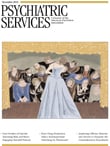Preventing Suicide Is Hard to Do!
Wonderfully talented, dedicated people have made extraordinary efforts to reduce suicide in the United States during the first years of the 21st century, but during that time the overall rate has risen. The crude suicide rate was 10.46 per 100,000 people in 1999 and rose to 11.48 in 2007, accounting for 34,598 deaths. The reports on suicide in this issue present sobering lessons for all of us and underscore what my colleagues and I have recognized as five major challenges in suicide prevention.
Challenge 1:an inability to discriminate the relatively few true cases from the large numbers of "false-positive" cases. Suicide is a relatively rare event—thankfully—but the clinical and social risks are common. Thus they have no predictive validity when applied to individuals.
Challenge 2:the large number of "false-negative" cases that escape preventive detection. No matter how vigilant we may be, many lethally intent individuals are not identified. Despite the high frequency of psychopathological findings revealed by using postmortem psychological autopsy methods, those features were not sufficiently compelling in life to raise alarms or foretell death.
Challenge 3:the inability of clinical and social services to reach many individuals who have suicidal intent. It is clear that most people in the midst of a life-ending crisis do not come to the attention of service providers and that the growth of crisis services during the past decade has not stemmed the rising tide.
Challenge 4:a continuing paucity of knowledge about fundamental biological, psychological, social, and cultural factors that contribute to suicide risk among diverse populations and groups. These risk factors vary by age, race, gender, sexual orientation, residential geography, and sociocultural and economic status. Our limited understanding of how best to define and mobilize protective factors that may diminish the impact of risk factors widens this knowledge gap further.
Challenge 5:the lack of coordinated strategies for suicide prevention that can deal effectively with myriad local, regional, state, and national agencies and organizations that could, in theory, play a role in preventing suicide.
It is my view that we will see a lasting turn of the tide only when we have programs that deal with fundamental factors such as family turmoil, early-life abuse, alcohol and substance misuse, partner violence, employment adversity, and encroaching medical comorbidities associated with poorly treated pain and functional decline. We must foster the development of public health and preventive psychiatry and instill a culture that reduces stigma and encourages both offering and accepting help. To say this in a different way: We must reduce the prevalence of adversities that drive human vulnerabilities toward distress and disease and at the same time increase people's willingness to grab a helping hand. Perhaps then we will see a steady decline of suicide.



